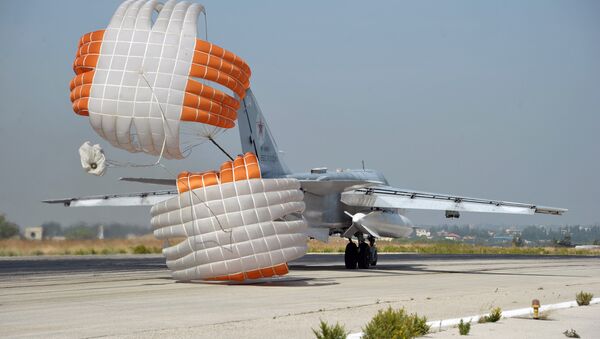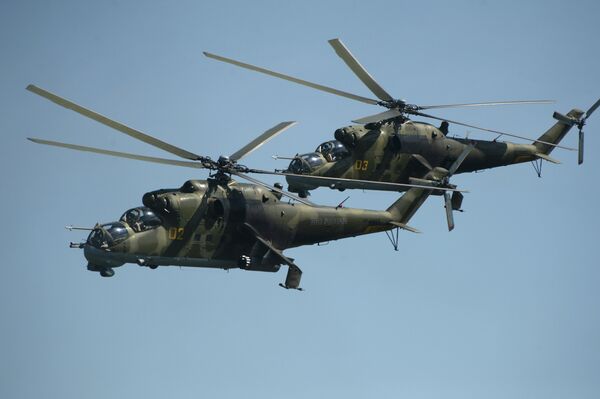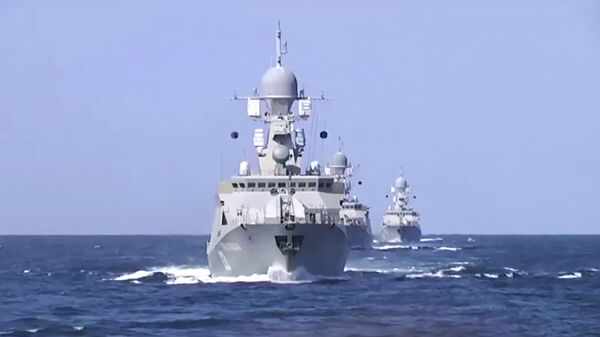The number of combat sorties depends on the number of ground targets identified by aerial and space reconnaissance of Russia, Syria, Iraq and Iran.
According to Dave Majumdar, a defense expert for The National Interest magazine, the Russian Air Force are close to conducting the theoretical maximum number of sorties per day.
So far, the unofficial record for the campaign was set at 88 sorties against 86 facilities in the provinces of Raqqa, Hama, Idlib, Latakia and Aleppo. A total of nearly 690 airstrikes have been conducted since the offensive began.
'Fencer'
The Su-24 (NATO reporting name: Fencer) is the main striking power of the Russian task force in Syria. According to the Pentagon, there are 12 aircraft deployed for the operation.

The aircraft is capable of conducting airstrikes in any time of the day and in any weather conditions. With its maiden flight having taken place back in 1970, the Su-24 was the first Soviet/Russian jet to feature a variable-sweep wing. The wing has four sweep settings which allow for perfect maneuverability during flights at subsonic and supersonic speeds. The maximum speed of the Fencer at high altitudes is 1,600 kmh.
The Su-24 became the first Soviet jet designed to operate at extremely low altitudes, up to 50 meters above the ground (with a maximum altitude of 11,500 meters).
The upgraded Su-24 carries the R60M air-to-air guided missile, the Kh-29L and Kh-25 ML air-to-surface missiles, as well as guided bombs, regular bombs and non-guided missiles.
'Fullback'
The Russian military operation in Syria also involves the Su-34 (NATO reporting name: Fullback) multirole fighter/bomber, the main attack aircraft of the Russian Air Force. According to the US Defense Department, Russia deployed six Fullbacks to the Hmeymim airbase, outside Latakia.
The Su-34 is an all-weather combat aircraft capable of carrying all available types of high-precision air-to-surface weapons.
According to The National Interest experts, one of the main advantages of the Fullback is its ability to carry air-to-air missiles, including the R-73 short-range missile and R-77 long-range radar-navigated missile (with an operating range of nearly 1,130 kilometers).
The aircraft is equipped with an electron-optic fire-control system, and rear-view radars which can detect targets behind the jet and immediately attack them with rockets. More so, the Su-34 can also serve an electronic warfare aircraft. It is equipped with the Khibiny multifunctional electronic system to protect the jet from missile attacks and ground air defenses.

The 'Flying Tank'
The Su-25 SM (NATO reporting name: Frogfoot) is an armored subsonic close air support/attack aircraft. This long serving aircraft has been involved in many conflicts across the world, including the Soviet invasion in Afghanistan. Due its capability to provide fire support to ground forces, the aircraft earned its reputation of the "flying tank."
A total of 32 different types of weapons can be mounted on the Su-25. Its main weapon is the GSh-30-2 30-mililmeter aircraft gun. At an altitude of 3,000 meters the aircraft can reach speeds of 950 kmh. Its flight range is nearly 2,000 kilometers, and the operational range is about 500 kilometers.
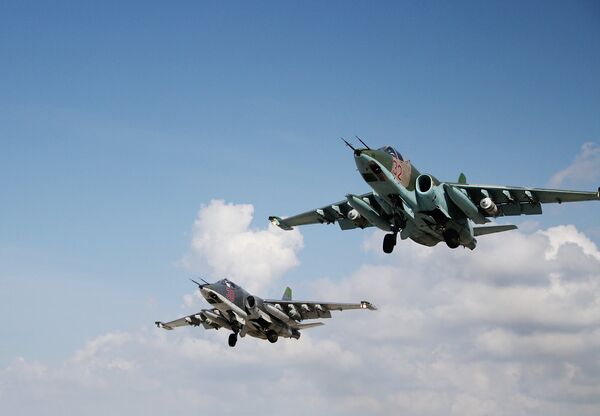
According to Western military analysts, despite its age the Su-25 is still the perfect war machine to attack ISIL positions in Syria. The Su-25SM underwent modernization in recent times; it was equipped with a GLONASS navigation system and advanced avionics which allow for the use of high-precision weapons.
Backup and Support
The Russian task force in Syria also is comprised of Su-30SM jet fighters. According to the Pentagon, there are four jets at the Hmeymim airbase. Their purpose is to protect ground support aircraft and bombers attacking ISIL.
The aircraft are armed with the R-73, R-27P and R-27ER air-to-air missiles. The R-73 is designed for dogfights. It has an operational range of 30 kilometers, and is equipped with a heat-seeking warhead. The R-27R and R-27ER have an operational range of up to 70 kilometers, with a guided flight of 35 seconds.
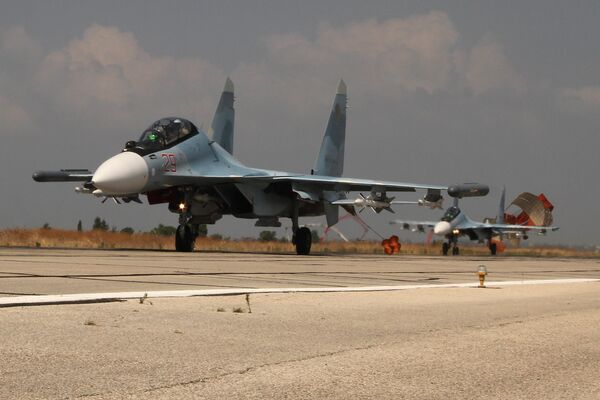
The Russian unit in Syria also includes helicopters. Their number and models have not been made public by the Defense Ministry though.
According to Colonel Igor Klimov, a spokesperson for the Russian Aerospace Forces, Mi-24 attack helicopters are used in the operation for search and rescue operations as well as to maintain security around the Hmeymim base.
Each of the helicopters is armed with four blocks of 20 non-guided missiles and a 30-mm gun. The Mi-24 has a maximum altitude of 4,500 meters; its top speed is 300 kmh.
Additionally, Mi-8AMTSh military transport helicopters are equipped with night-vision devices and as a result, they can fly even at night and at extremely low altitudes, 5-10 meters above the ground. Helicopters can also carry a group of riflemen who can fire through the cabin windows.
Sea-Borne Salute
The 26 missiles fired by the Caspian Flotilla against ISIL positions in Syria took more than just the militants by surprise. Those who doubted the capabilities of 3M14 cruise missile of the Kalibr ship-based system were in shock and awe after the first strikes.
According to US military analyst Eric Wertheim, international specialists were surprised by the small size of the ships of project 11661 (the Tatarstan, the Dagestan) and of project 21631 Buyan-M. The displacement of these warships is no more than 2,000 tons.
To compare, the US Navy would need an Arleigh Burke-class destroyer with a displacement of 8,000 tons to launch a Tomahawk multipurpose missile, a rival to the Russian 3M14 missile.
Despite their compact size, warships of the Caspian Flotilla showed off an unprecedented firing range of more than 1,500 kilometers.

